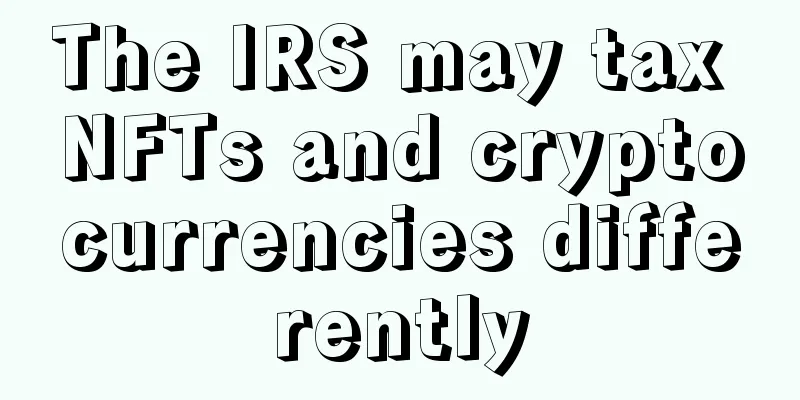The IRS may tax NFTs and cryptocurrencies differently

|
In the digital realm, all taxes are not necessarily the same. Amid the NFT craze, wealthy owners may pay different tax rates on the growth of their holdings. Specifically, investors who sell NFTs may need to pay a federal tax rate of up to 31.8% on any gains. By comparison, the appreciation of Bitcoin, Ethereum and other digital coins is subject to a maximum tax rate of 23.8%. That’s because NFTs may be collectibles for tax purposes, which have higher top tax rates on capital gains than assets like stocks, bonds and cryptocurrencies. The IRS doesn’t explicitly say NFTs are collectibles, which leaves some room for interpretation. But many tax experts believe they clearly fall into the same group as art, antiques, gemstones, metals, stamps and coins — which the IRS labels as tangible collectibles that should be subject to higher tax rates. Jeffrey Levine, a St. Louis certified financial planner and accountant at Buckingham Wealth Partners, said of NFTs: “I don’t understand how it’s not a collectible.” The boom of NFTs and cryptocurrencies NFTs are essentially one-of-a-kind digital assets that can extend beyond art to things like tweets and GIFs. The NFT market has grown rapidly. According to NonFungible.com, sales reached $6 billion in the third quarter of 2021, an increase from about $22 million the previous year. In March, Christie's became the first major action institution to sell an NFT-based virtual artwork, which was sold for $69 million. Additionally, the number of NFT buyers has also swelled - from 19,000 in the same period of 2020 to about 260,000 in the third quarter of last year. Similarly, the recent cryptocurrency craze has also enveloped investors. According to a 2021 CNBC survey, more than 10% of American adults own cryptocurrencies, and nearly two-thirds of them have purchased cryptocurrencies in the past year. Capital gains tax Investors pay capital gains taxes when they sell an asset. They are levied on any appreciation that has accumulated since purchase. The IRS generally taxes long-term capital gains at a maximum federal tax rate of 20%. Long-term gains apply to cryptocurrencies and other assets owned for more than a year. In 2021, singles with taxable income over $445,850 pay the top tax rate of 20%. Wealthier individuals are also subject to a 3.8% surtax on investment income, which kicks in when a single person makes more than $200,000 -- bringing the total federal tax rate on capital gains to 23.8%. However, collectibles - often owned by the super-rich - are subject to a different tax regime. Their long-term capital gains are taxed at the higher federal top rate (28%), which also kicks in at different income levels. At the same time, a 3.8% surtax also applies. As a result, a wealthy NFT owner could owe as much as 31.8% federal tax on the value added. “If you have art or classic cars, for example, then you’re (probably) an ultra-high net worth individual, which is why the IRS has this special long-term capital gains tax rate,” said Shehan Chandrasekera, director of accounting and tax at CoinTracker. How taxes work Troy Lewis, associate professor of accounting and taxation at Brigham Young University, said it's confusing that different income thresholds apply to capital gains taxes on collectibles. Investors pay ordinary income tax on the appreciation of collectibles, up to 28%. "If your ordinary tax rate is less than 28%, you pay your ordinary tax rate," Lewis, who also owns an accounting firm in Draper, Utah, said of the collection. A single taxpayer in the 22 percent tax bracket -- which last year applied to incomes of about $41,000 to $86,000 -- would pay the top rate of 22 percent on the long-term appreciation of a collectible. Conversely, people in the 37 percent tax bracket — which applies to income over $524,000 — would see their collectibles tax rate capped at 28 percent. In both examples, taxpayers would be taxed at a higher rate on the appreciation of NFTs than on cryptocurrencies. Unresolved issues While the prevailing thought among tax practitioners seems to be that NFTs are collectibles, that’s not necessarily the end of the issue. The IRS classifies art and other tangible personal property as collectibles. NFTs likely fall into the "one-say" category, placing them in the collectible category; but NFTs are also intangible - placing them in a murky area of the tax code. “Is it a collectible?” Lewis said. “That’s not well settled yet because it’s still a new field. |
<<: Will the increase in USDT issuance drive Crypto inflation?
>>: What does Chinese law say about the theft of digital collections?
Recommend
Baidu promotes Trojan wallet, users lose Bitcoin
Mr. Dai was an early Bitcoin player who started i...
South Korea to introduce Bitcoin regulation in 2017
As Bitcoin and digital currencies gain popularity...
Chaoke.com is in debt of millions of dollars, and users are blocked from withdrawing money
Text: Hoho Source: Fengchao Finance Before the di...
Ma'anshan and Nanjing police jointly cracked a Bitcoin mining machine theft case involving 1.6 million yuan
On December 23, with the strong assistance of the...
Analysis of facial features: Judging personality from the way you comb your hair
In daily life, different people sometimes have ve...
Physical characteristics of getting rich
As the saying goes, "Small wealth comes from...
Mining is cooling in North America
As more industries require renewable energy, Bitc...
What does a mole on a boy's right hand mean?
Everyone has moles on their body, and these moles...
Men's faces that will definitely lead to divorce are destined to remarry
Marriage is a major event in life, and you should...
What does it mean when the life line is forked in palmistry? You need to carry a lucky charm with you.
There is actually some very revealing information...
What are the characteristics of the most unlucky women? What kind of women are most unlucky for their husbands?
Whether a person's fortune is good or not can...
New U.S. Infrastructure Bill Hopes to Raise $28 Billion Through Crypto Taxes
The White House hopes to raise $28 billion from c...
Are people with moles on their eyebrows likely to attract bad people?
We need to deal with all kinds of people every da...
Ethereum Serial (IX): Installation and Customization of C++ Client (III)
run Running eth without any arguments will sync y...
Moles on the hands, what do they mean?
Sometimes, we can tell a person's fate from h...









